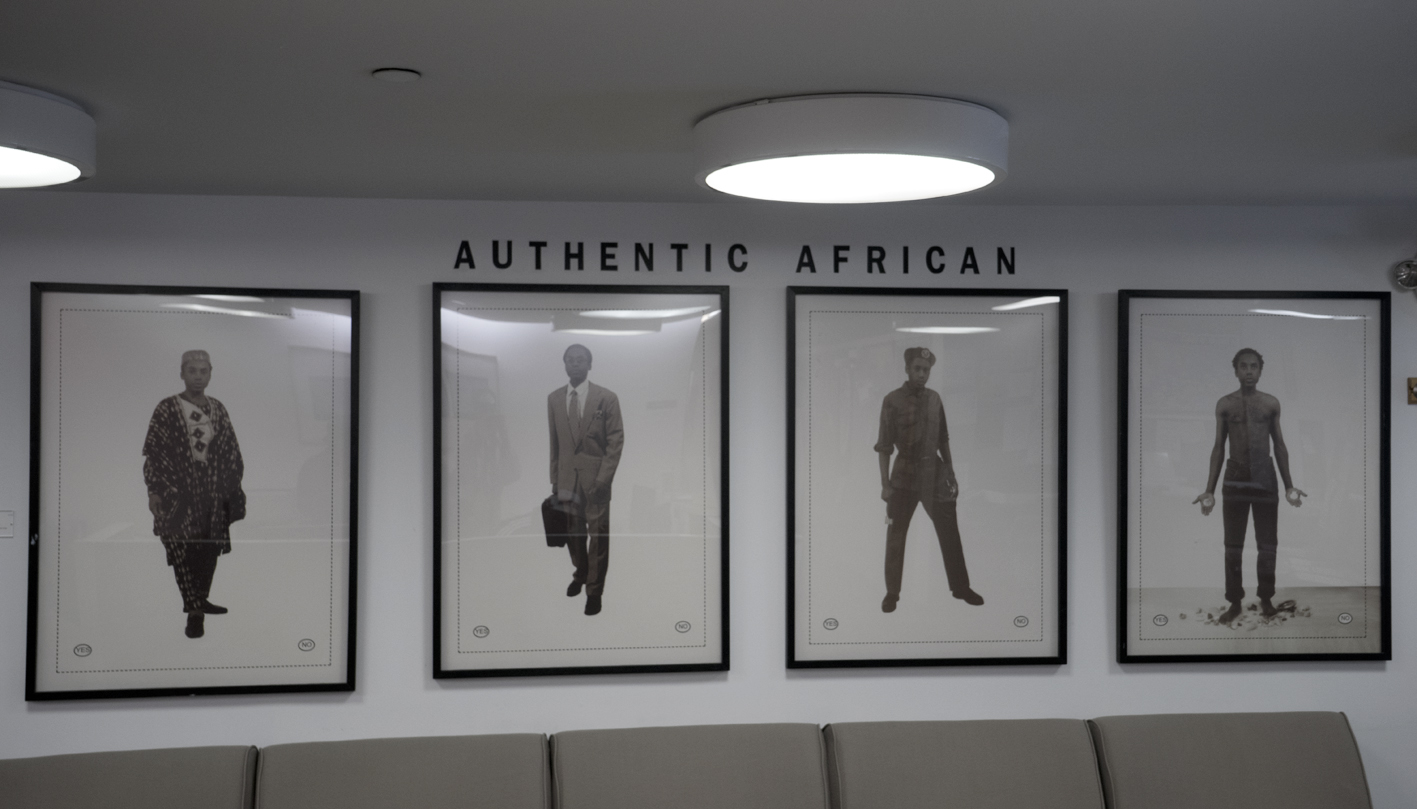
Every day, in the reception lobby of the Academic Advising Office for Eugene Lang College, I encounter the Authentic African by Nigerian-American artist Odili Donald Odita. The work consists of photographic panels of a black male in various attire: (1) traditional African dress, (2) a business suit, (3) a military uniform, and (4) shirtless. The figure holds various objects in several of the panels: a briefcase in suited panel, a pistol in the uniformed panel, seashells in the shirtless panel. For the panel that depicts African dress though, one hand is empty and the other positioned in a pocket. All panels are under the project title, “Authentic African.” Each includes both Yes and No circles in the lower corners, suggesting that we as viewers are supposed to decide (yes or no) which is/are authentically African.
The exhibit invokes several reactions for me. For instance, students who wait on the couch in the reception lobby for an advisor are framed with this background. Particularly for African-American students seated under these images and words, I wonder if the images ever prompt a sense of alienation or distance from what might be perceived as reductive images. How then would that impact on how our space (ideally a space for student support) is perceived?
The juxtaposition of imagery is also uncomfortable. The panels appear to segment identities into singular dimensions of the same man, although are collectively denoted as the “Authentic African.” The work contains some popular signifiers and stereotypes of Africanness (in the cloth patterns) in tandem with imagery of Western capitalist modernism (with the business attire). On first encounter, what the artist might intend to say is unclear— does he mean to expand or reduce notions of authenticity, represent or resist diasporic identities? How should/can we enter a dialogue in which everything feels declarative: What might often be considered cultural totems and tokens are labeled with the word “authentic” above it, and the choices are yes/no. The grammar of the piece reads as a question without any punctuation.
A sense of confusion about its purpose prompted me to read more about the artist, and garner some insight from his other work. In one important artist statement, Odita offers, “I am dealing with memory, the presence and absence of experiences removed; nostalgia for a lost past, and the hope for something new and better.” For most of us who have been here for some time, the photographs are just part of our daily background, but when new students or visitors arrive, I still recognize that first curious reaction to the Authentic African.
Should this particular display have something like an artist statement available to provide some context about its purpose?
Is a student support department the appropriate location for art that might prompt discomfort or disagreement for some students? And if not, are we as professional staff and/or faculty in any position to determine if the art belongs anywhere more “appropriate,” or is that tantamount to censorship?
Even when images evoke discomfort and ambiguity, who are we to propose any change to the artistic labor of another?
Jonathon White
Staff, Eugene Lang College The New School for Liberal Arts

